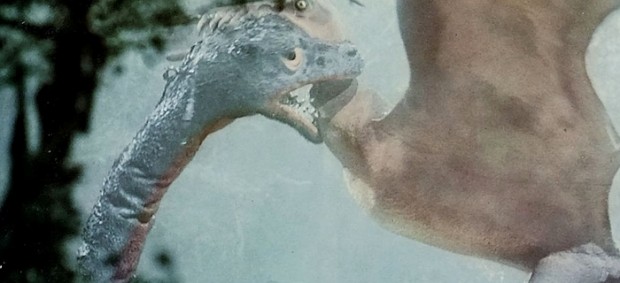
While no cue numbers are given for track 3, the booklet states that it's the equivalent of M3 and M4. The songs for the film ("Legend of Distant Blood" and "Final Chapter") were recorded at Taihei Studio and mixed for the film at Sound City on March 20, 1977. The score was recorded on Maat Sound City, located at Azabudai, Minato-ku, Tokyo.

as "The Legend of the Dinosaurs", but it's now widely known as "Legend of Dinosaurs and Monster Birds", which is nearly identical to the original Japanese title, "Legend of Dinosaurs The film was initially released in the U.S. Death Fight of the Dinosaur and Monster Bird (SE) Perhaps even more strangely, this movie was a big deal in Russia and was, at one time, the 19th highest-grossing foreign film of all time in the USSR.29.

The plesiosaurus is a member of the sauropterygia and only a distant relation of dinosaurs while the rhamphorhynchus is a pterosaur, which is not a bird. Oddly enough, there are neither dinosaurs nor monster birds in a movie named Legend of Dinosaurs & Monster Birds. They eventually battle and then fall into an erupting Mount Fuji. It turns out that not one but two kaiju are on the loose: a plesiosaurus and a rhamphorhynchus.

There’s even a gory scene where a headless horse is found hidden in a tree. The film takes inspiration from the aforementioned shark movie, having attacks on boaters and swimmers and a build of the tension until the monster is unleashed.

Therefore, this was the perfect movie for Toei to appeal to not just the Japanese movie audience, but one across the world. At the same time, everyone had grown obsessed with the Loch Ness Monster. After all, who knew monster movies better than them?įilming started the very same month that Jaws was released overseas. Toei president Shigeru Okada attended several film festivals and trade fairs in America and as he saw the way the film business was shifting toward blockbusters like Jaws, he felt that Japan should follow that trend.


 0 kommentar(er)
0 kommentar(er)
